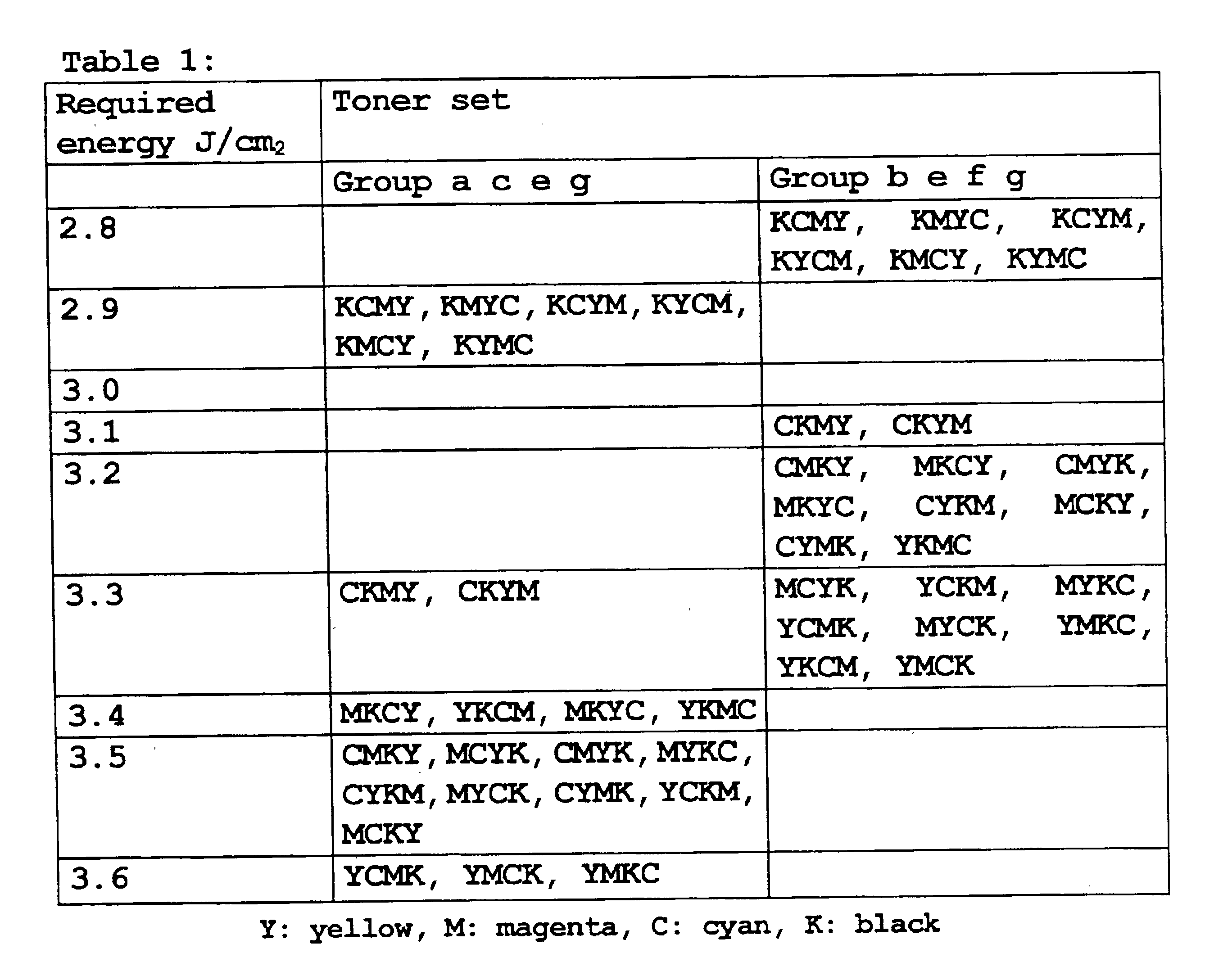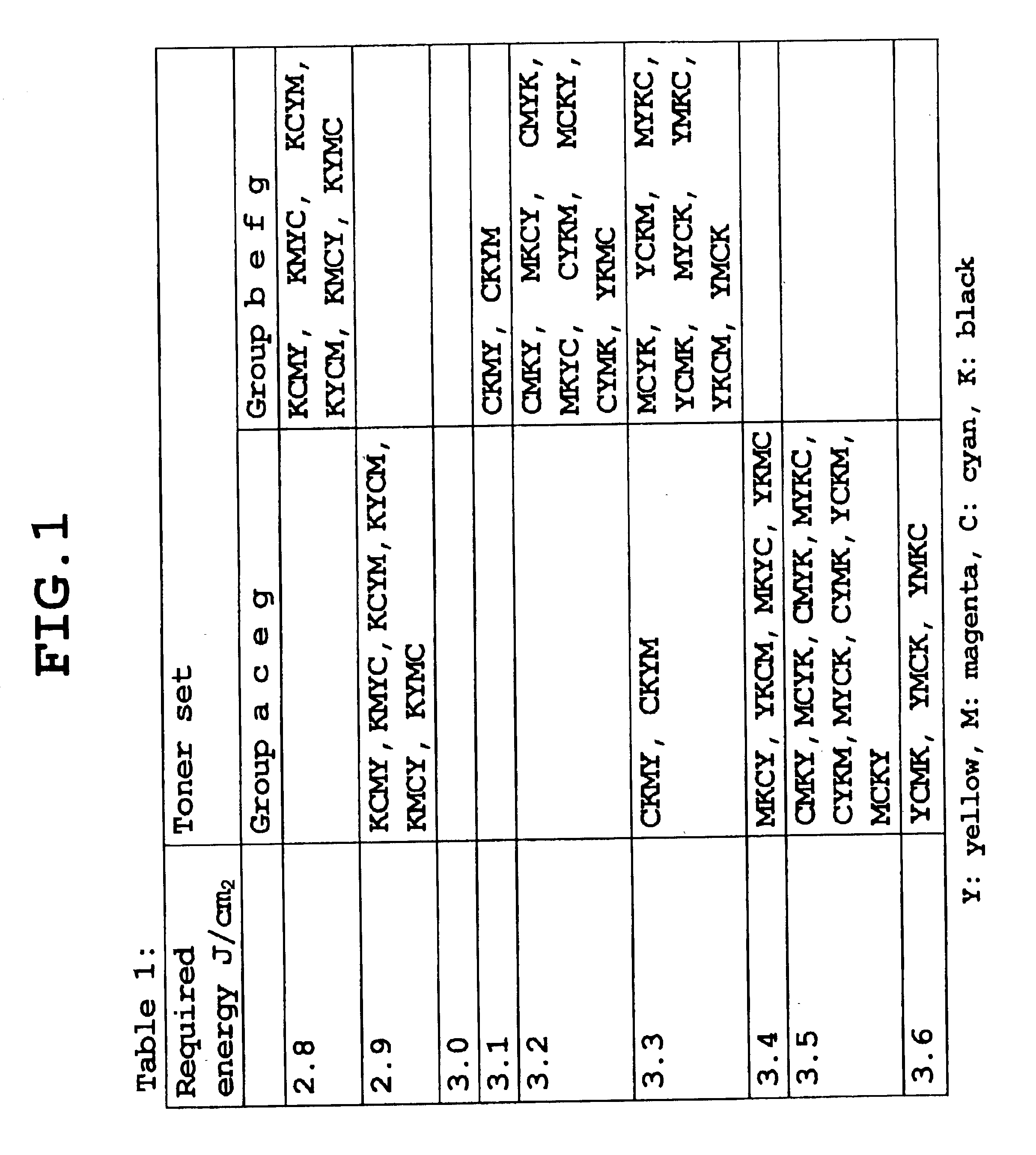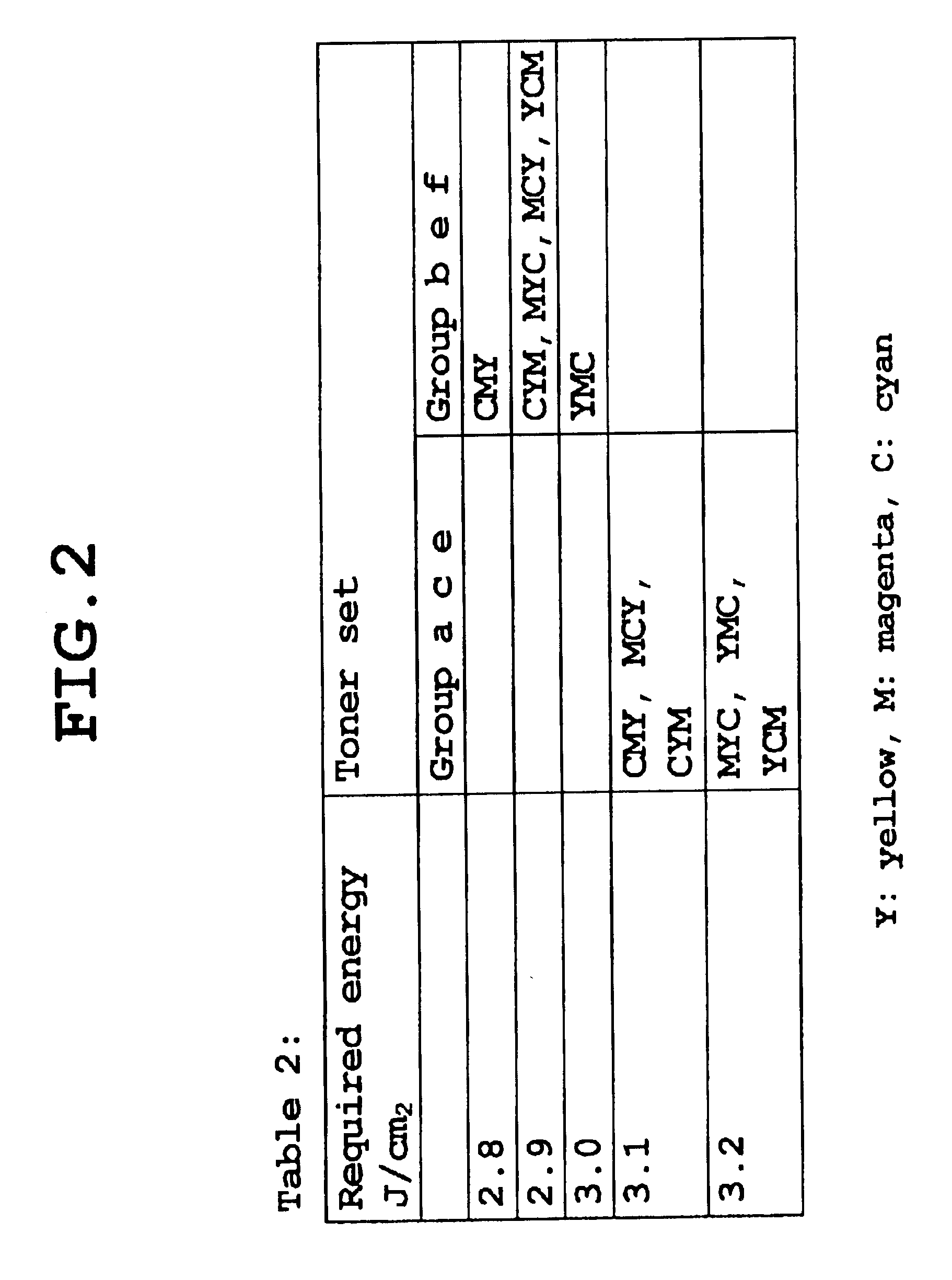Image fixing method
a technology of infrared light and fixing method, which is applied in the field of image formation method, can solve the problems of not solving all the problems described above, affecting the chroma and hue of a color image, and adding a small amount of infrared light absorbent material does not sufficiently improve the fusion properties of the binder resin, etc., and achieves low irradiation power, efficient transmission, and easy to achieve
- Summary
- Abstract
- Description
- Claims
- Application Information
AI Technical Summary
Benefits of technology
Problems solved by technology
Method used
Image
Examples
Embodiment Construction
In the following, embodiments of the image formation method of the present invention are described in detail. The image formation method of the present invention uses a plurality of color toners that contain at least a binder resin, a colorant, and an infrared light absorbent. Each of the color toners is laminated one-by-one on a recording medium, such as paper, and a toner powder image is generated. Each layer of the color toners is called a first layer, a second layer, and so on until the n-th layer, the first layer being immediately above the recording medium, and the last layer, i.e., the n-th layer, being the closest to a luminous source. Flashlight irradiation is applied to the laminated toner powder image such that the toner powder image is fused and fixed. This is called “sequential developments and one-time fixing” in the present specification.
Here, the present invention is unique in that the sequence in laying the toners is specified based on a PAS strength value. The PAS ...
PUM
 Login to View More
Login to View More Abstract
Description
Claims
Application Information
 Login to View More
Login to View More - R&D
- Intellectual Property
- Life Sciences
- Materials
- Tech Scout
- Unparalleled Data Quality
- Higher Quality Content
- 60% Fewer Hallucinations
Browse by: Latest US Patents, China's latest patents, Technical Efficacy Thesaurus, Application Domain, Technology Topic, Popular Technical Reports.
© 2025 PatSnap. All rights reserved.Legal|Privacy policy|Modern Slavery Act Transparency Statement|Sitemap|About US| Contact US: help@patsnap.com



